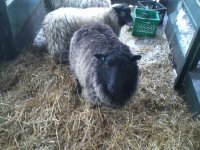I would use a pipe to run the heat lines through also. If for no other reason than making it easy to replace a line if needed.
There are certainly a lot variations to choose from in wood boilers. Some are much more efficient than others, but cost more to purchase. I think that is one of those "pay now or pay later" situations. Put a lot of wood through a lower cost boiler, or smaller amounts through more expensive boiler.
Another consideration is you will want AC in your location. A boiler won't help with that. You could chose a system that heats and cools such as the mini-split units.
Okay, here is my solar energy speech:

No matter what heat source you use, the first consideration is to reduce the amount of energy required. SE Michigan is not the best location for solar energy but you can get a worthwhile amount from the sun for free by building for passive solar gain (glass) and storage using thermal mass (concrete).
This map shows that you and I are in the same rating zone for solar insolation (amount of sunshine

).
http://www.nrel.gov/gis/images/eere_pv/national_photovoltaic_2012-01.jpg
It may be hard to believe, but the propane boiler for our radiant heat system is still waiting for me to fix it, our forecast for the next four days is highs 10-15, lows -14 to +5, and I am not in the least worried. We will be just fine burning a little wood in the living area masonry stove and using a 120V electric space heater in the bedroom overnight.
The radiant floor heat is in the category of "nice to have" for our passive solar house. Our house will not get colder than 45*-50* even if we add no heat other than sunshine, and that would only happen in a long stretch of cold and cloudy weather.
If you take advantage of the free heat from the sun, your regular heating system goes from being your primary heat source to your secondary source. You will burn a lot less of any fuel, and reduce the needed capacity and cost of the unit burning it.
You can also use solar electric panels in a grid-tied installation to help power mini-split Heat/AC units. They use the most power for AC in summer when you have the most abundant sunshine.
The cost today, and for the rest of your life, of a Btu or watt of solar energy is zero.


